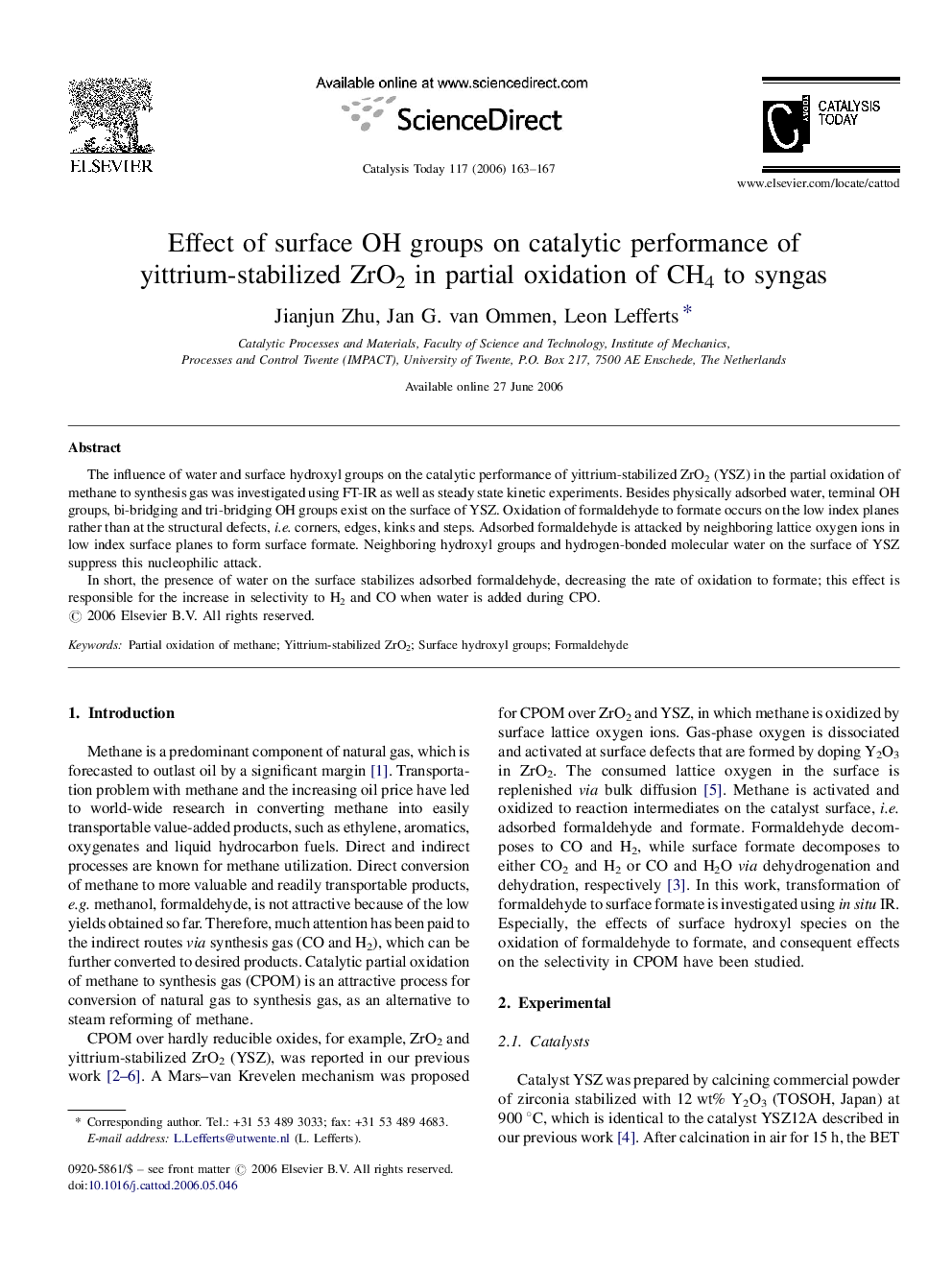| Article ID | Journal | Published Year | Pages | File Type |
|---|---|---|---|---|
| 58071 | Catalysis Today | 2006 | 5 Pages |
The influence of water and surface hydroxyl groups on the catalytic performance of yittrium-stabilized ZrO2 (YSZ) in the partial oxidation of methane to synthesis gas was investigated using FT-IR as well as steady state kinetic experiments. Besides physically adsorbed water, terminal OH groups, bi-bridging and tri-bridging OH groups exist on the surface of YSZ. Oxidation of formaldehyde to formate occurs on the low index planes rather than at the structural defects, i.e. corners, edges, kinks and steps. Adsorbed formaldehyde is attacked by neighboring lattice oxygen ions in low index surface planes to form surface formate. Neighboring hydroxyl groups and hydrogen-bonded molecular water on the surface of YSZ suppress this nucleophilic attack.In short, the presence of water on the surface stabilizes adsorbed formaldehyde, decreasing the rate of oxidation to formate; this effect is responsible for the increase in selectivity to H2 and CO when water is added during CPO.
